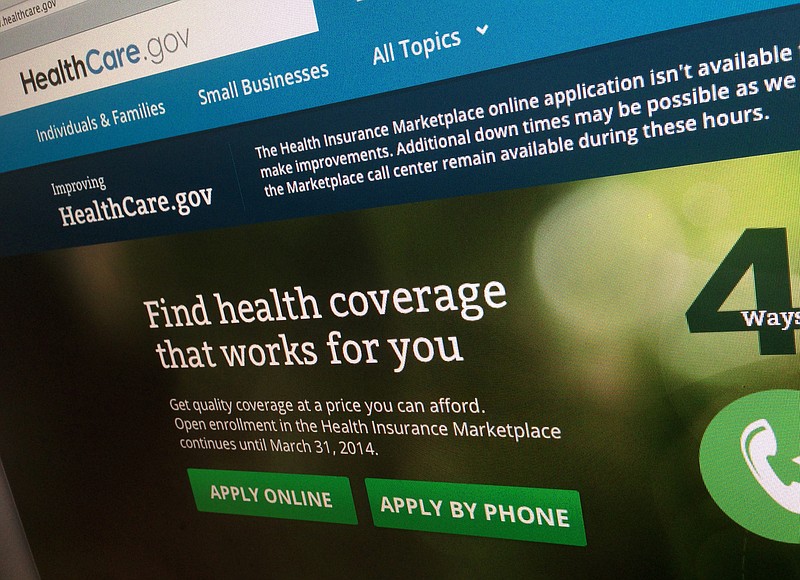For the first time since introducing the Marketplace plans for individuals under the Affordable Care Act in 2014, Tennessee's biggest health insurer is having to refund some of what it charged its customers last year because it didn't pay out enough of its premium income in health care costs in 2018.
BlueCross BlueShield of Tennessee mailed out insurance rebates Monday totaling $21.4 million to about 100,000 individual policy holders, and another $1.2 million was mailed to small group employers. The rebates are coming on top of an average 14.9% cut in rates implemented this year by BlueCross under its Marketplace plans.
The Chattanooga-based BlueCross began offering the only statewide coverage under the Affordable Care Act, or Obamacare, five years ago when the Marketplace plans were initiated in Tennessee. Due to its initial aggressive pricing and unanticipated expenses and changes in the new federal program, BlueCross initially lost more than $400 million on its Obamacare coverage in the first three years.
In response to such losses, BlueCross more than doubled its rates over time after the federal government cut its risk adjustment payments to insurers and eliminated the individual mandate for all persons to buy health insurance. BlueCross also limited some of its coverage areas to put the individual market back in the black in 2017 and the company reported record earnings last year.
As a result of its price adjustments and the market stabilizing, BlueCross has now reached a five-year break-even point on its individual line of business and actually earned more than what the Affordable Care Act allows in 2018.
"We found the balance between our medical expenses and our premiums and we made a little bit more than we should have, so we owe that difference back to our customers," said Kelly Paulk, vice president of product strategy and individual markets at BlueCross. "Our biggest priorities are keeping our members healthy and advocating for affordability - the vast majority of the premium dollars we collect pay for medical services or improvements in the quality of care our members receive."
BlueCross rebates
- Tennessee's biggest health insurer is paying $21.4 million for individual policy holders because their medical payments totaled 77.9% of premiums - 2.1% below the required 80%.- Small group policy holders are getting $1.2 million in rebates because their medical payments totaled 79.8% of premiums - 0.2% below the required amount.Source: BlueCross BlueShield of Tennessee
Other health insurers also are likely to be making rebates to customers this fall. Kevin Walters, communications director for the Tennessee Department of Commerce and Insurance, said Monday that the Centers for Medicare and Medicaid Services will publish the total amount of such rebates in November.
In 2017, the other handful of health insurers participating in the Marketplace plans in Tennessee refunded a total of $10.6 million to Tennesseans due to not meeting the minimum medical loss ratios in the previous three years.
Under the Affordable Care Act, health insurers must pay out 80% of their premiums charged for individual or small group plans to health care providers for services or products. Over the past three years, state regulators determined that BlueCross paid 77.9% of the premiums paid on individual plans and 79.8% on small group plans for medical care. The rebates being paid to thousands of BlueCross customers this week are for medical losses below the 80% threshold.
BlueCross topped the requirements for large group plans by paying out 87.7% of those premiums for medical services and products.
Beyond paying for medical claims, premium dollars are used for operating costs such as customer service, fraud prevention, quality measurements, and digital tools for members. After BlueCross pays local, state and federal taxes, the company keeps a portion as net income, which goes into reserves.
Rebates are based on adjusted premiums for 2018 medical coverage, not the amount of premium each policyholder paid, and do not cover premiums for other coverage such as dental or vision.
Contact Dave Flessner at dflessner@timesfreepress.com or 423-757-6340.

